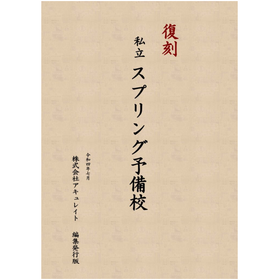A Satirical and Humorous Senryu of Prep School Students Seen Through Springs and Peening
[Reprint Private Spring Preparatory School Lecture 48] Introducing a short poem consisting of three lines of 5-7-5 syllables, primarily focusing on humor and satire!
This is the third time for the Hanano Preparatory School's cultural festival. It’s both beneficial and not beneficial, which is what makes it great. If we only talk about things that are beneficial, it becomes like a wedding table speech, and it gets boring. In that regard, our school's haiku club, which I will visit today, may not have much to offer and is quite poor, but it somehow gives off an interesting vibe. *For detailed content, you can view it in the PDF. Please feel free to contact us for more information.*
- Company:アキュレイト 東京カスタマーセンター
- Price:Other













![[Spring News July Issue] Spring Trivia "What is Free Height?" Featured!](https://image.mono.ipros.com/public/product/image/357/2000537941/IPROS35706681436172789178.png?w=280&h=280)
![[Spring News October Issue] Spring Trivia: "What is the Spring Constant?"](https://image.mono.ipros.com/public/product/image/404/2000556115/IPROS60272010575805081112.png?w=280&h=280)